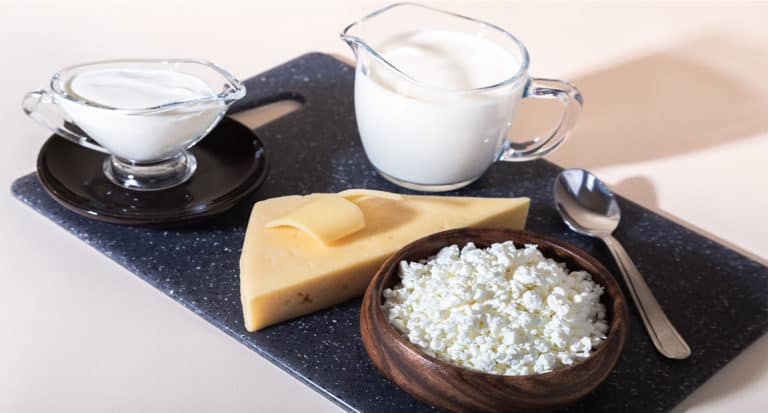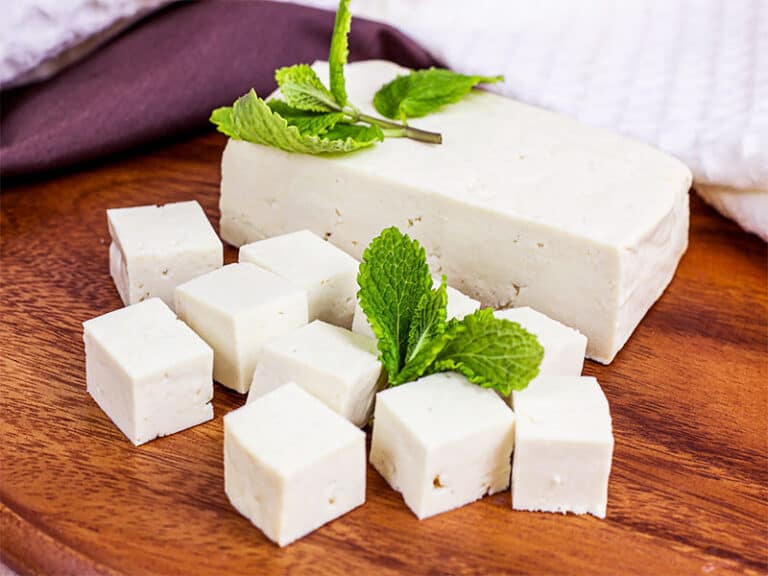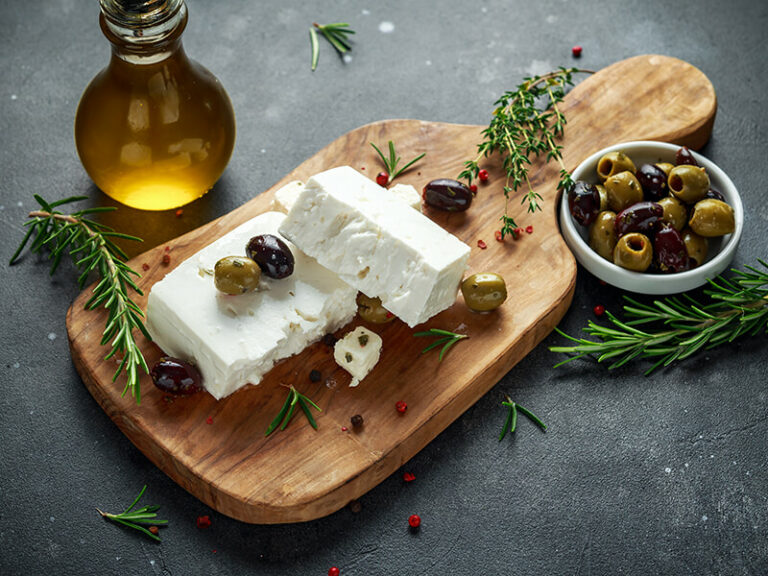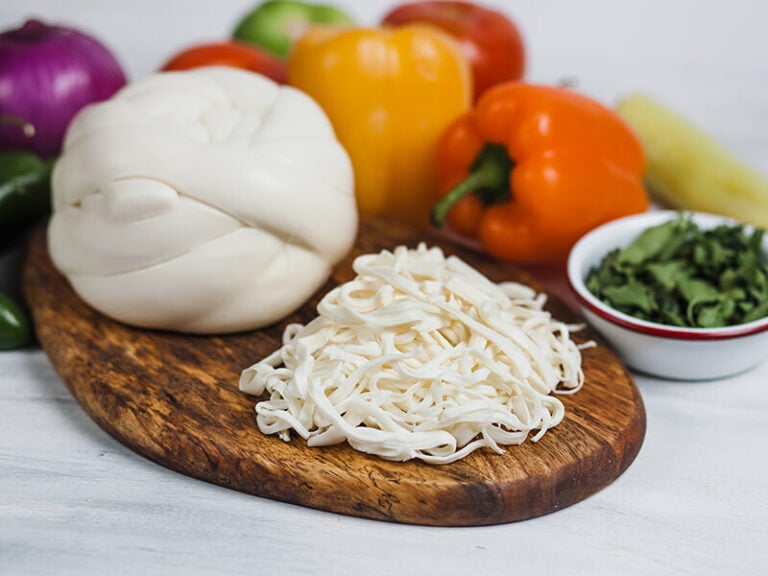What is Emmentaler cheese? It is the most frequently asked question. Since the world of cheese is plenty, learning about Emmentaler’s characteristics will help you distinguish Emmentaler from others and use the cheese correctly.
Therefore, if you want to know about Emmentaler cheese, this article is for you. In this post, I will give you all the detailed information about Emmentaler. You will learn about when and how to use this tasty cheese. Let’s scroll down and discover now!
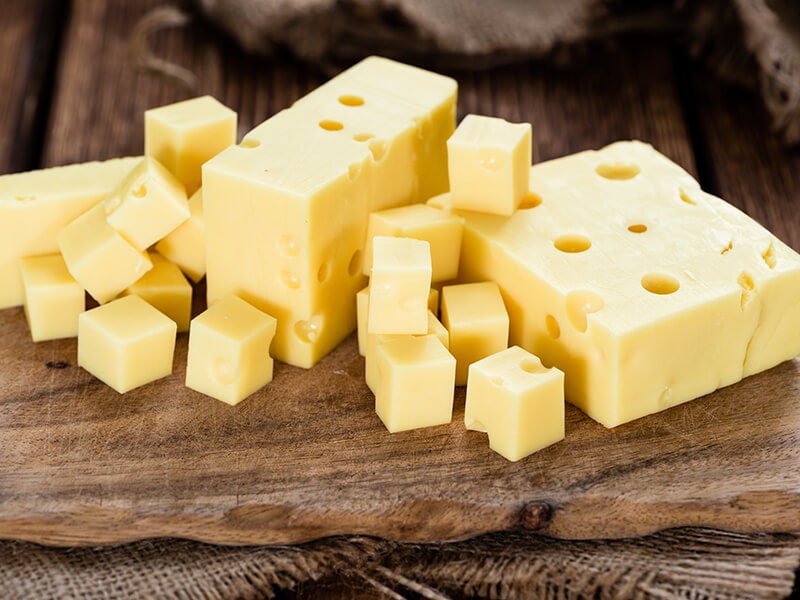
What Is Emmentaler Cheese?
Emmentaler is a semi-hard cheese with a dense body made mainly from cow’s milk. You can distinguish the Emmentaler from other cheeses based on the holes or “eyes” formed when the cheese is fermented.
Which Country First Produced Emmentaler Cheese?
Emmentaler or Emmenthaler originated from the valley of the Emme river in the 13th century. The name Emmentaler is the combination of Emme river and “tal ” which means valley in German.
Emmentaler has been recognized as the oldest cheese in Switzerland and is a heritage of the Swiss. It is made from raw cow’s milk (unpasteurized) in a few Swiss-designated areas. Therefore, people usually think of Emmentaler when mentioning Swiss cheese.

The Authenticity Of Emmentaler
Since 2003, the original Emmentaler has been called Emmentaler AOP to identify the cheese’s quality and authenticity. One high-quality Emmentaler AOP can be aged up to 18 months.
AOP stands for Appellation D’origine Protégée, which means Protection Destination of Origin, issued by the Institut national de l’origine et de la qualité (INAO).
To be registered as Emmentaler AOP, the cheese must meet quality assurance requirements, including ingredients, methods, aging, animal breeds, milk source, cheese composition, and physical attributes.
Currently, Emmentaler AOP is produced in 110 designated villages. The cheese will be made only from raw cow’s milk and natural ingredients and excluding preservatives and genetically modified ingredients during the production process.
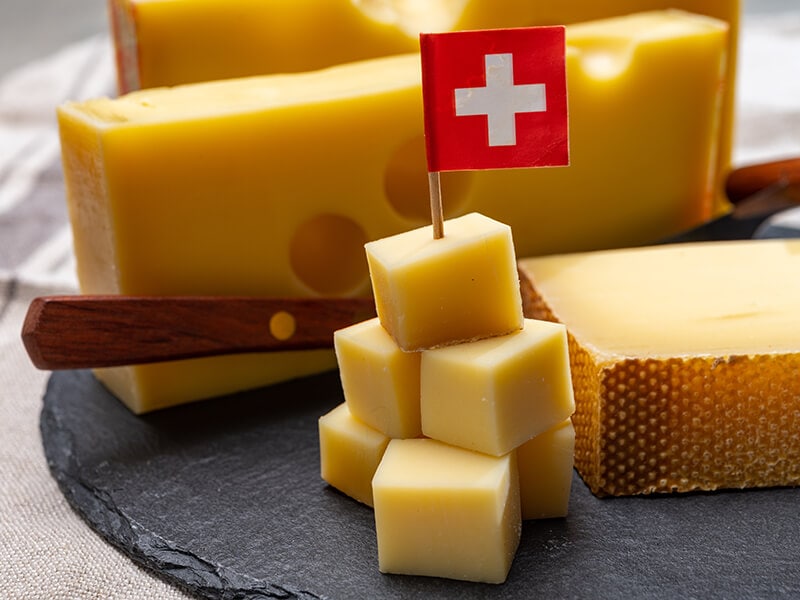
General Flavor Of Emmentaler Cheese
Emmentaler is loved by people worldwide due to its aromatic, sweet, and delightfully intricate flavor. However, the taste of Emmentaler will change following its maturity.
Young Emmentaler is aged for at least four months and has a mild, fruity, and sweet flavor. Nuttiness becomes the primary note as the cheese ages, while the sweet takes a bit longer to appear.

The Wide Range Of Emmentaler’s Color
Emmentaler’s color ranges from pale yellow and ivory yellow to dark yellow. The aging process has an impact on this transition. The older the cheese, the darker its color.
By looking at the color of Emmentaler cheese, you can guess the cheese’s age. However, if the cheese is covered by wax coating, it’s hard to tell its age.
The Reason Behind Swiss Cheese’s Eyes
Swiss cheese, or Emmentaler, is well-known for its holes known as eyes. This is the key characteristic to distinguish Emmentaler from other cheeses.
People used to believe the holes were caused by hay flecks found in cow’s milk. These tiny specks cause the weak structure of Emmentaler, allowing gas to form into bubbles and create holes.
However, in 1912, a chemist named William Mansfield Clark demonstrated that Propionibacter Shermani bacteria were the main culprit for holes in Swiss cheese. In fact, this bacteria is good for your health since it helps improve immune function. (1)
This bacteria consumes the curd and releases carbon dioxide during the aging process, resulting in bubbles in the cheese. When the bubbles “pop”, it leaves cherry-size holes known as eyes.
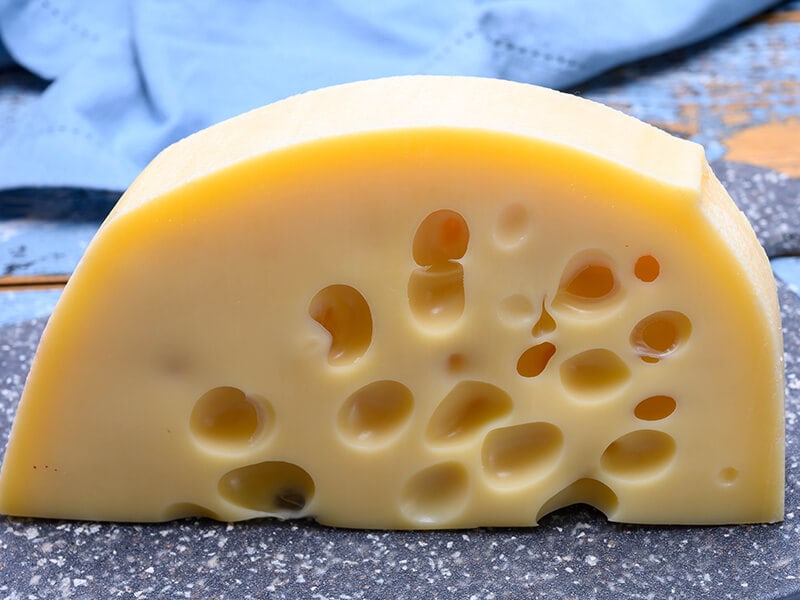
Types Of Emmentaler Cheese
Original Swiss Emmentaler cheese (Emmentaler AOP) is usually divided into three categories based on the length of the aging process.
Besides, it’s possible to divide Emmentaler based on the country of its manufacturers. For example, Emmentaler, made in Norway, is called Jarlsberg cheese, while Maasdam cheese is Emmentaler cheese of the Netherlands.
Classic
Emmentaler AOP classic takes four months to age. It’s recognizable with a well-proportioned rind, ivory-colored interior, and cherry-sized holes. From the first bite of the classic version, you can feel the smoothness which will be warmer in your mouth later.
Emmentaler classic has a signature mild and nutty flavor. The hard texture and perfect melting point make this cheese suitable for some recipes, such as fondue and sandwiches.
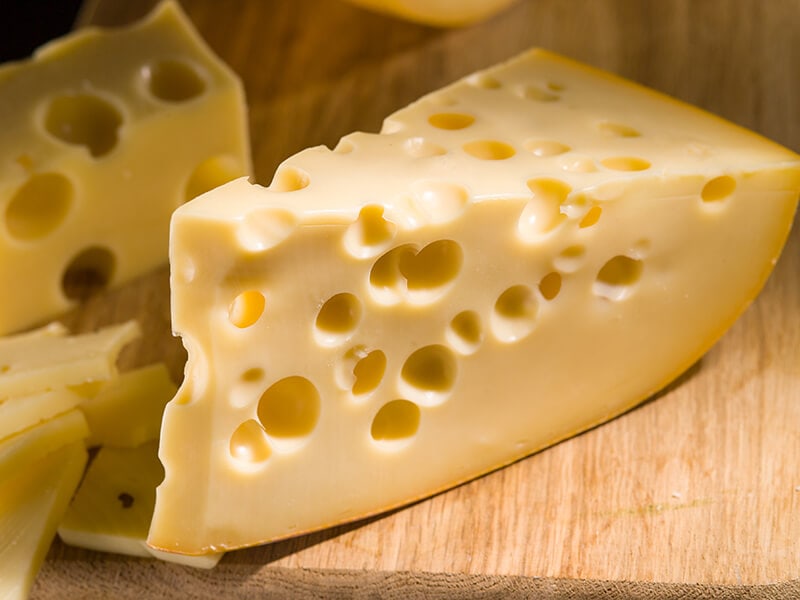
Réserve
Many people said that Emmentaler reserve is for gourmet. The réserve version originated from the four-month classic Emmentaler, carefully selected for further maturing.
The time for Emmentaler reserve fermenting is at least eight months. Therefore, it developed a deeper taste compared to the classic version. With a subtle flavor, this cheese melts in your mouth with a smooth texture and nice crumble.
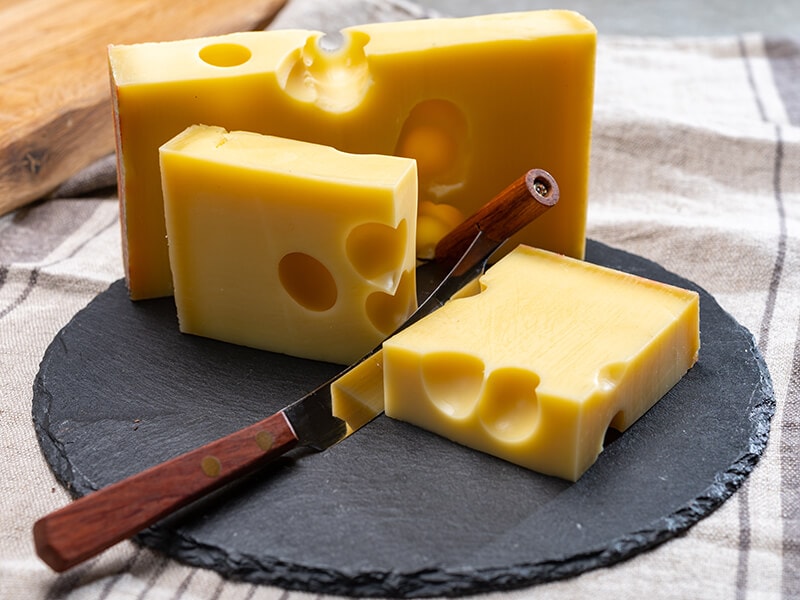
Cave-Matured
Emmentaler cave-matured is a cheese with at least one year of aging. The taste of the cave-matured version is sharp and strong. It is ripened to full flavor, finely tangy, and savory despite the subtle sweetness.
It’s also the Emmentaler that has a dark yellow color. A slice of cave-matured Emmentaler is perfect in a cheeseburger.
Jarlsberg Cheese
Jarlsberg cheese is a type of Emmentaler made in Jarlsberg, Norway. The pale yellow, regular large eyes make Jarlsberg cheese different from the original Emmentaler AOP.
It is a mild, buttery cheese with a semi-firm yellow interior. The flavor of the Jarlsberg version is slightly sweet and nutty. You can use it for all purposes, from cooking to eating raw as a snack.
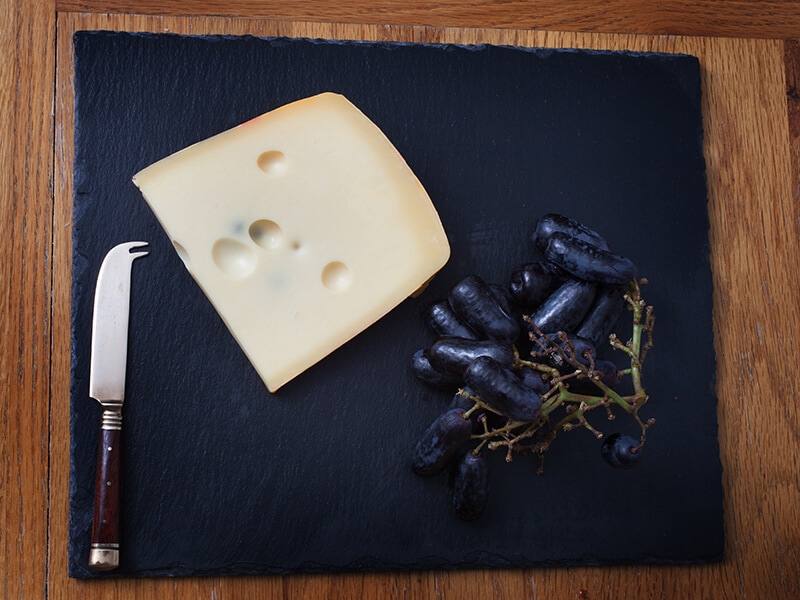
Maasdam Cheese
Maasdam cheese is another version of Emmentaler from the Dutch. It is made to compete with the Emmentaler AOP at a lower price. Usually, Maasdam cheese mainly consists of cow’s milk (pasteurized).
Usually, Maasdam cheese is made within four weeks. Therefore, it saves a lot of money for storing, which leads to a lower price. This cheese has a nutty and sweet flavor as Emmentaler cheese but with a softer texture due to its high moisture content.
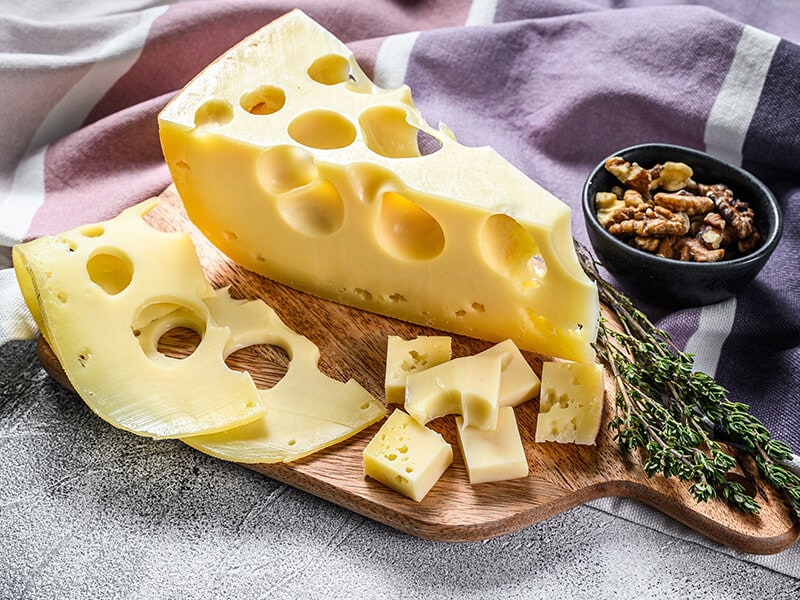
The Right Way To Get Emmentaler Cheese At Grocery Stores
When it comes to authentic Emmentaler, this cheese is usually sold at cheese auctions. However, since this is a popular cheese, you can still find one or two types of Emmentaler in supermarkets or grocery stores.
To have the best Emmentaler at supermarkets, you need to pay attention to the color, the number of holes, and the texture. Usually, the paleness is the sign cows have more grass and hay, while the abundance of holes tells you about aroma and flavor development.
If your cheese has a hard body, it means it was processed at a greater temperature than required (higher than 70ºF). Besides, you also need to look at the manufacturer’s brand to ensure you have high-quality and authentic Emmentaler cheese.
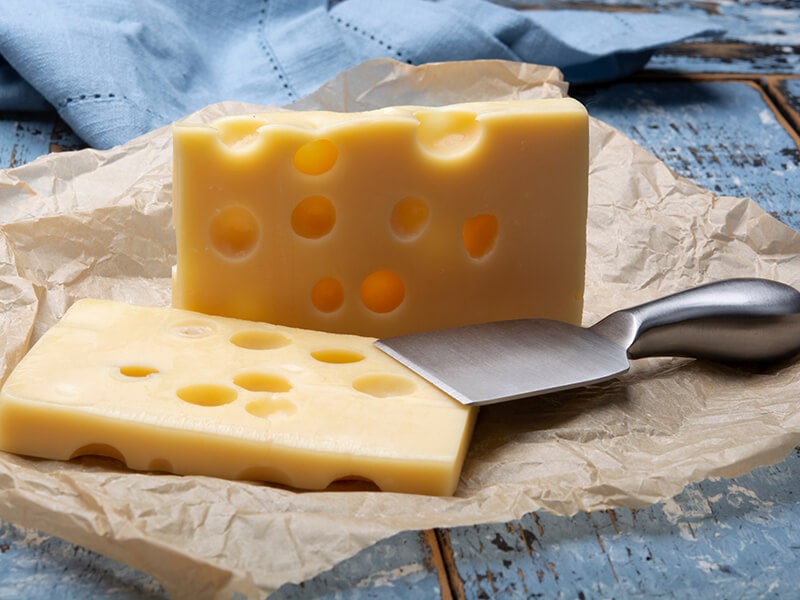
How Is The Emmentaler Made?
The authentic Emmentaler AOP is only made in some specific areas of Switzerland and needs to follow strict regulations. Cow farms must feed the cows with grass or hay and are not allowed to be far from the cheese factories than 20 km to ensure the quality of raw milk.
To make Emmentaler, Swiss dairies warm milk to 33ºC (90ºF) and put three types of bacteria inside the milk. Then, the rennet will bind the fat and protein into curds before being cut into small pieces.
After that, they need to knead and press the curd for around 12 hours to form the cheese wheels. After finishing the process, the wheels will be moved to the cellar for aging.
Surprisingly, Emmentaler is the biggest cheese in the world since the finished product can be high to 80 – 100 cm and weigh between 75 – 120 kg.
Let’s discover the complex process behind one wheel of Emmentaler cheese.
Storage Solutions For Emmentaler Cheese
Like other food, Emmentaler cheese may spoil if you don’t store it properly. Let’s check out some notes for storing Emmentaler cheese at home.
How Long Does Emmentaler Cheese Last?
Usually, one commercial Emmentaler cheese is protected by a vacuum-sealed chunk, with an expiry varying from 6 months to 2 years.
Besides, you should remember to never put the Emmentaler cheese at room temperature for over 2 hours (2). Since Emmentaler contains various bacteria varieties, which can grow to dangerous levels if you don’t store the cheese properly.
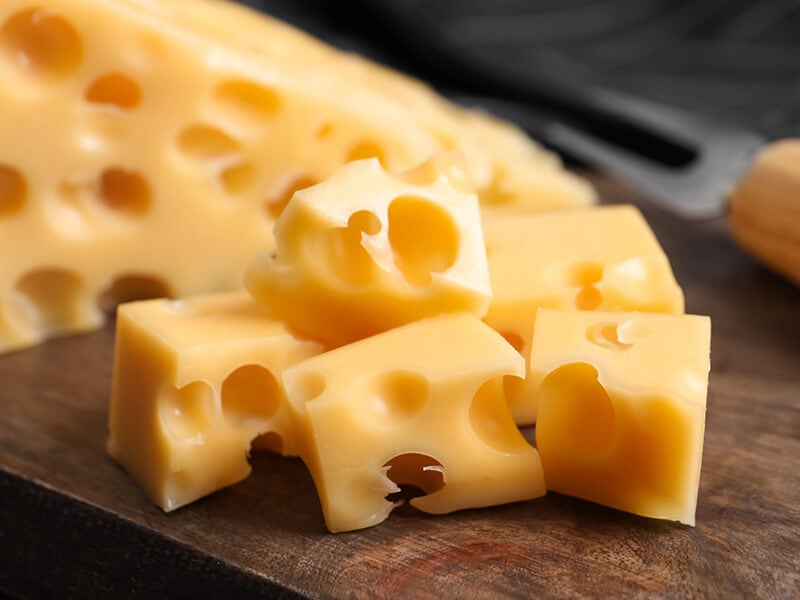
Freezing Can Help Keep Emmentaler Cheese Longer
Leaving Emmentaler in the fridge or freezing it are the best ways to store this cheese. Deli-counter Emmentaler, for example, can stay in the fridge for 3 or 4 weeks after opening. However, if you freeze the cheese constantly at 0ºC, it’ll be safe indefinitely.
It’s easy to store Emmentaler in your freezer by putting it in a freezer bag before placing it in a freezer. When you want to use the cheese, you should move it to the fridge for at least one night to defrost.
However, the cheese may dry out and become crumbly and melty if you store it too long in the fridge. So, use Emmentaler as soon as possible.
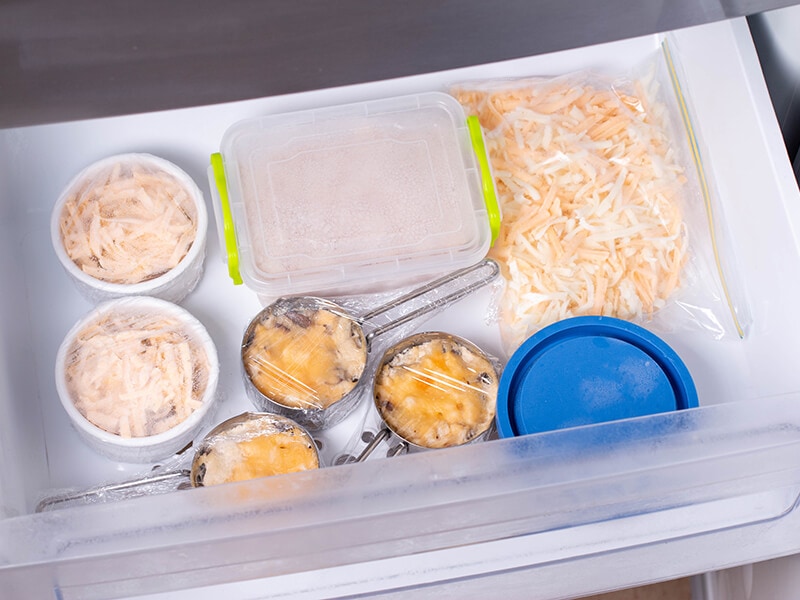
What Food Does Emmentaler Cheese Use For?
When it comes to the usage of Emmentaler cheese, I have a bunch of guides and recipes to share with you. Emmentaler’s full and unique flavor is perfect for many melted cheese dishes. You will be impressed by its ease of use!
The perfect melting properties make Emmentaler widely used for fondue – one signature dish of the Swiss. It is also used for melted cheese dishes, such as pasta and cheese sandwiches.
Besides, people love eating raw Emmentaler cheese as a snack. Emmentaler cheese is also a lovely pick for a cheese platter with fruit and nuts.
Pairing your cheese with wine is also a good idea. Since Emmentaler has a mild taste, it is nice to try this cheese with some Chardonnay. Fruity reds, white, and sparkling wine also pair well with Emmentaler.
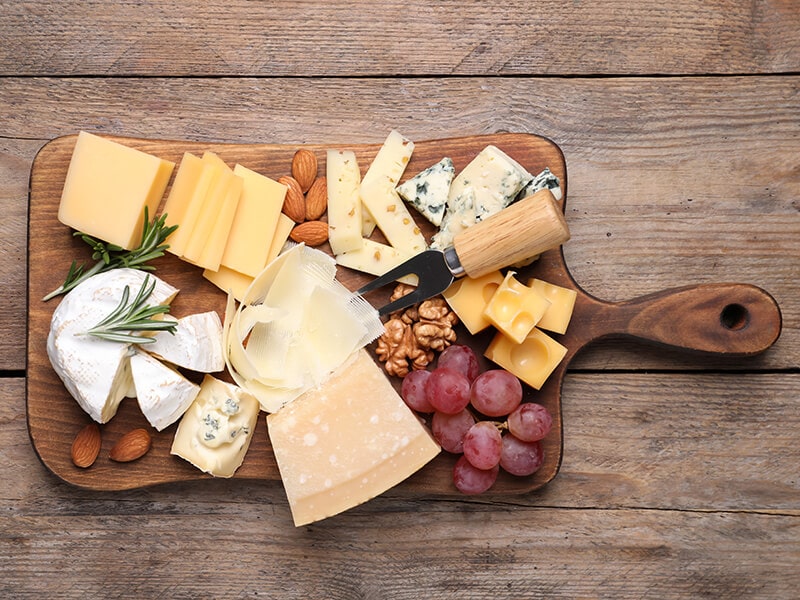
Let’s Learn Some Emmentaler Cheese Recipes
Have you ever wondered about Emmentaler cheese recipes? Let’s expand your menu with some fascinating recipes from Emmentaler cheese.
1. Cheese Fondue
Cheese fondue combines creamy melted cheese and cubed bread. Since cheese fondue is a traditional Swiss dish, it is a perfect match for sharing on special occasions like Christmas or New Year’s Eve.
This cheese fondue is always easy to make.
2. Ham And Cheese Sandwich
This ham and cheese sandwich combines tasty ingredients for your brunch or quick lunch. A bite of this sandwich can treat you to the savory and nuttiness of Emmentaler cheese and ham.
3. Potatoes Au Gratin
Potatoes au Gratin is a French side dish that goes well with any main. It is a fantastic pairing between cheese and potatoes. You won’t be disappointed with the creamy and cheesy dish when having it on a cozy winter night.
If you are looking for a cheese side dish, let’s try this Potatoes au Gratin.
4. Emmental Cheese Puffs
Emmental cheese puffs are versatile enough to serve as an appetizer, side dish, or dessert. Both kids and adults love these little cuties since they are savory, with a crispy crust and a creamy filling.
5. Hot Cheese Dip With Emmental
Cheese dip is a nice appetizer for any party. People love cheese dip since it is nice to pair with many other things, such as raw vegetables, crisps, and crackers. This cheese dip is rich, hot gooey, and buttery enough for a relaxing night.
FAQs
I’m glad to tell you all about Emmentaler cheese. However, learning never hurts. If you still want to learn more, check some frequently asked questions below.
Emmentaler – The Symbol Of Switzerland!
Nowadays, when it comes to Switzerland, people will remember Emmentaler’s signature mild and nutty flavor. It isn’t surprising that this cheese can conquer people worldwide as an icon of the highest-quality cheese.
I’m glad to tell you all about this delicious cheese. Remember to share this article with those who want to learn more about Emmentaler cheese. And please share your thoughts on Emmentaler in the comments section below.
References
- The benefits of probiotics bacteria (2017) Harvard Health.
- Commissioner, O.of the Are you storing food safely?, U.S. Food and Drug Administration. FDA.


